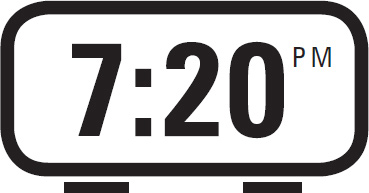

“Hey, honey, what do you think about inviting my mom over for dinner this weekend?”
“Instead of a ski vacation this year, what about a Disney cruise?”
There are politically correct ways to answer these questions—ways that will keep one of you from sleeping on the couch. And then there are the real answers—what you are really thinking behind that polished veneer of politeness and compromise. If you want to know what your partner really thinks, you need a window past the machinations of his or her prefrontal cortex—past the mask that we are so good at slapping down on our faces to hide our emotions and intentions.
This window exists in something called a microexpression. Like the delay between seeing the pep band’s cymbal crash and hearing its roar, there is a short delay between an emotion we feel and our ability to mask it. In these milliseconds, the human face shows its true emotion.
A quick image search online for “Ekman microexpressions” (after the researcher Paul Ekman, who coined the term and has contributed most of the major studies in the field) shows hundreds of good examples of microexpressions—pictures that show faces caught in the act of emotional expression. But in the real world, one secret to spotting these microexpressions is not blinking. Ekman shows that microexpressions last only one-fifteenth to one twenty-fifth of a second, after which people tend to consciously or unconsciously conceal them.
This small window offers important information. One study found that a doctor’s ability to recognize his or her patients’ microexpressions correlated with patients’ evaluations of the doctor’s empathy. Another study showed videotape of a speech by George H. W. Bush from which researchers had removed seven smiling microexpressions. Without the speech’s friendly subconscious underpinnings, subjects felt more threatened and angry. Another showed that people who can detect microexpressions are better at catching liars—that is, as long as liars are fibbing about something with emotional content, which creates what the researchers call “facial leakage” (meaning that if you’re lying, you should try to detach emotion from the lie).
Even subconsciously, microexpressions influence your perceptions of the world, and learning to see them with your conscious mind could give you clues to your significant other’s thoughts and feelings that you might not be able to get any other way. The question is, can you learn to notice these microexpressions consciously? Computers certainly can. Citing its use in a lie detection system, Chinese researchers describe an automated system that recognizes and interprets microexpressions with 85.42 percent accuracy, which they write is “higher than the performance of trained human subjects.”
But even without a computer’s ability to take a snapshot and then progress frame by frame while crunching data at the speed of a silicon chip, you can learn to pull information from microexpressions. Ekman offers a range of (paid) tools to train your ability to spot and use microexpressions. But one thing you can do for free right now is simply work to raise your awareness that microexpressions exist. We miss the information of microexpressions because we don’t think to look.
Next time you have an important conversation, be it while evaluating a job candidate, chatting with a friend, or this evening while attempting to glean hidden information from the people you love, watch closely to see if the flash of one expression is replaced by the mask of another. This short window can offer a glimpse into truth, lies, and the real emotions people are feeling.